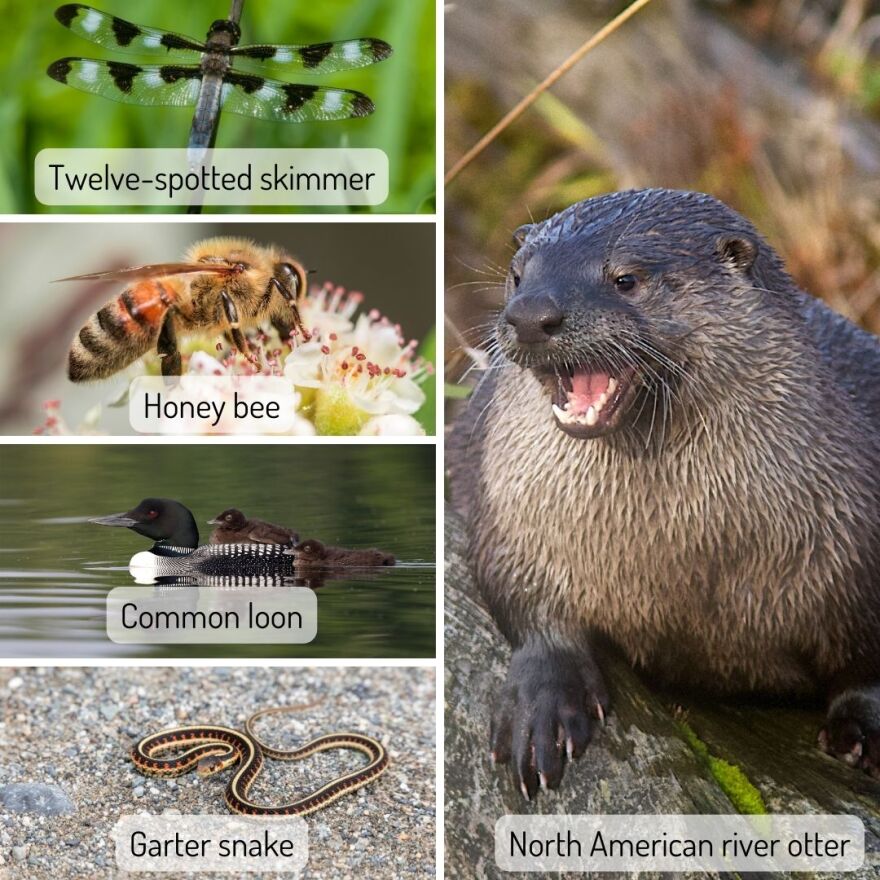Buckle up, y'all: the Long Lake campers had an absolutely packed week in nature. Plus, we have three new teacher/youth leader workshops on the schedule! Let's get this party started.
Chloe, Clare, Sam, Finn, and Adeline give us their report from a whirlwind week at Long Lake Conservation Center! With the help of Minnesota Master Naturalists Ron and LeAnn Plinske, they captured and identified dragonflies. They found more than a dozen different species and even hand-fed them deer flies!
The loon chick has nearly doubled in size. Papa loon got his workout in for the week: a marauding male tried to invade his territory! They puffed up their chests, did a lot of loud calling, and there was a general commotion until the invader gave up and flew off.
The loons aren't the only ones hard at work raising their young: the students found two families with poults (baby turkeys), one with nearly-grown juveniles and one with more recently hatched poults. Similarly, they spotted a doe and a fawn at the shore of the lake (the fawn was about half the size of its mother, with clearly visible spots!). The otter count is now up to three: congratulations to Mama and Papa otter!
As if that wasn't enough for one week, the students also learned about bees! With the assistance of Roger Sorben (of Sorben Honey), they saw the queen bee, held stingless drones, and ate honey right out of the hive. To top it off, they ate blueberries and raspberries on their way to the bog.
In the bog, they found pitcher plants, ate Labrador tea leaves, and drank bog water. They also had a rare sighting of a garter snake in the bog: it is the first snake the naturalists have ever seen in the bog habitat. Then, they had a lake-bottom organisms class, where they found dragonfly nymphs and caught dozens of leeches that they used to catch bluegills and perch.
Oh, and did I mention they saw porcupines strolling through campus, a baby snapping turtle, frogs, toads, a mouse, a bunch of different spiders, a yellow finch, and a hawk?!? We know they mean it when they say, "What a week in nature! It's a great time to explore the world, and we want to remind everyone to unplug, get outside, and live connected!"

John is just as blown away by their activities as I am! It turns out that Ron knows Ron and LeAnn as long-time members of KAXE: I know them as classmates in my Master Naturalist class! It's a beautiful, small world for us nature enthusiasts. John says, "showing the kids about dragonflies and feeding deer flies to dragonflies? Man, that is perfect. That makes my day." He also comments on the loon fight, turkeys, fawns, otters, bees, honey, and pitcher plants. He has an interesting observation to share regarding the garter snakes in the bog: in his work at the SPRUCE project, he encounters garter snakes about once every two weeks. He hypothesizes that they might prefer the cool, wet environment during times of high heat. He also mentions that they feed on frogs, mice, insects, and whatever else they might find.
Remember that you can add your voice to this list! We would love to hear from you. Get in touch with me (smitchell@kaxe.org) or John (jlatimer@kaxe.org), or text 'phenology' to 218-326-1234.
For more phenology content, subscribe to our Season Watch newsletter!






